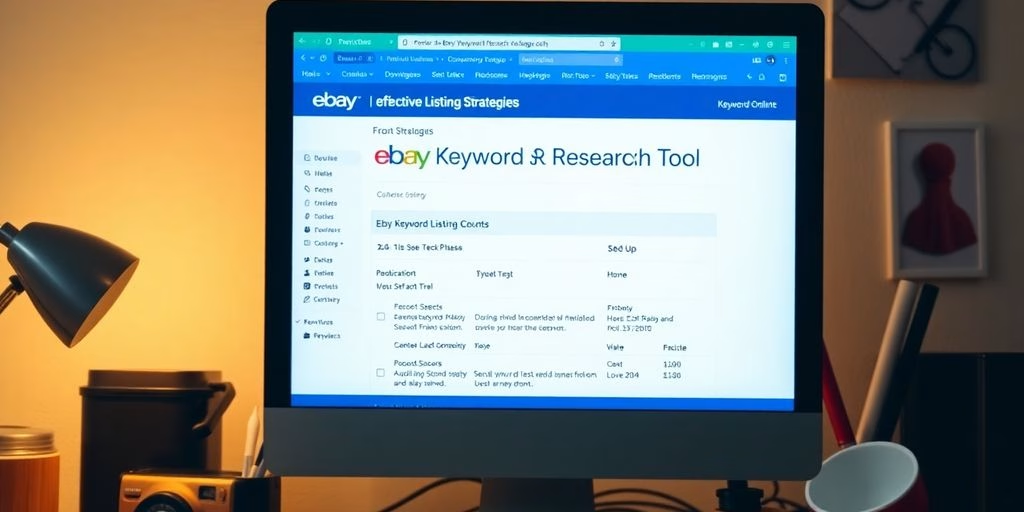The digital age has revolutionized the way we consume news, with news websites and online platforms delivering instant updates and a plethora of multimedia content. This article delves into the dynamic evolution of news websites, exploring how they cater to a society that demands real-time information, interactivity, and personalized content. We will examine the impact of technology on news production, the challenges of maintaining diverse perspectives in an era of echo chambers, and the rise of design and analytics in engaging audiences.
Table of Contents
ToggleKey Takeaways on News Website
- Digital media has transformed news into a 24/7 cycle, necessitating real-time reporting and innovative storytelling techniques to meet audience demands.
- The integration of multimedia and interactivity in news content has become essential, with artificial intelligence playing a pivotal role in news production.
- Online platforms contribute to ideological segregation through personalized newsfeeds, prompting strategies to counteract echo chambers and filter bubbles.
- Global news consumption is influenced by varying media models, with the liberal and polarized pluralist approaches affecting how news evolves across different cultures.
- The role of design in news has expanded, with visual culture and interactivity at the forefront, and the emergence of social media analysts reshaping newsroom dynamics.
The Clock Never Stops: 24/7 News Website Landscape

The Impact of Real-Time Reporting on Public Discourse
In the whirlwind of digital media, real-time reporting has become a cornerstone of how we consume news. The immediacy with which stories are delivered can shape public opinion almost instantaneously, making the role of news websites more critical than ever. This rapid dissemination of information has the power to mobilize communities, influence stock markets, and even sway political outcomes.
- Real-time reporting allows for the immediate sharing of events as they unfold, often outpacing traditional news cycles.
- The phenomenon of ‘citizen journalism’ has emerged, enabling individuals to report on events in real-time, share eyewitness accounts, and amplify marginalized voices.
- However, this instant news environment also fosters the spread of rumors and misinformation, challenging the public’s ability to discern credible news sources.
The digital age demands a new kind of literacy—a savvy understanding of how to navigate the flood of information and separate fact from fiction. As news websites evolve, they must balance the need for speed with journalistic integrity, ensuring that the rapid news cycle does not compromise the quality of reporting.
Adapting to the Insatiable Appetite for News Website
In the whirlwind of digital media, news websites are in a constant race to satisfy the public’s hunger for the latest updates. The velocity at which news is expected to hit our screens is staggering, and journalists are under pressure to deliver with both speed and accuracy. This relentless demand has given rise to a new set of strategies to keep the audience hooked.
- Real-time analytics track which stories are gaining traction, allowing editors to make swift decisions on coverage priorities.
- Collaborative tools enable reporters to file stories from anywhere, merging immediacy with on-the-ground authenticity.
- Agile content management systems facilitate rapid publishing cycles, ensuring that newsrooms can push out stories as they unfold.
The challenge is not just to be first but to be right. The integrity of reporting must keep pace with the speed of dissemination.
The digital transformation has not only reshaped the landscape of news production but also the expectations of its consumers. Newsrooms must now operate with a mindset that embraces the continuous evolution of technology, much like web designers who stay informed and engage with designers to remain at the forefront of their field.
How News Websites Manage the Non-Stop News Stream
In the relentless whirlwind of the 24/7 news cycle, news outlets have become adept jugglers, keeping countless stories in the air with the grace of a circus performer. The secret to their success? A blend of technology and tenacity. With the advent of digital media, the traditional newsroom has undergone a metamorphosis, now resembling a high-tech command center where every beep and flash could herald the next big story.
- Artificial Intelligence: AI retools the newsroom, rationalizing workflows and enabling journalists to focus on in-depth reporting.
- Audience Analytics: Understanding audience preferences helps craft high-quality content that resonates and retains attention.
- Ad Optimization: Aligning ad timing with audience rhythms and tracking performance is crucial for financial sustainability.
In this digital dance, news outlets must not only report the news but also anticipate the trends, engage the audience, and stay financially afloat amidst the tempest of tweets and torrents of traffic.
The challenge is to maintain journalistic integrity while meeting the insatiable appetite for breaking news. Newsrooms are increasingly relying on algorithms and automated systems to filter the signal from the noise, ensuring that the most relevant and impactful stories reach the public eye.
The Digital Newsroom: A Hub of Innovation and Interactivity

Multimedia Storytelling: Engaging Audiences Beyond Words
The art of storytelling transcends the written word, embracing a symphony of sensory experiences that captivate the audience. Newsrooms are no longer just a source of information; they are a canvas for multimedia narratives that weave together text, sound, and visuals into a rich tapestry of interactive content.
- Videos bring motion and emotion to the forefront, turning viewers into witnesses.
- Infographics distill complex data into digestible visual stories.
- Interactive maps guide users on a journey through geographical and topical landscapes.
The fusion of these elements not only informs but also immerses, transforming passive readers into active participants in the storytelling process.
The Social media revolutionizes the marketing landscape, compelling news outlets to navigate platforms and trends to forge authentic connections with their audience. The evolution of news reporting now demands a blend of traditional journalism with innovative modalities, from virtual reality to mobile chat apps, reshaping the very fabric of news consumption.
The Role of Artificial Intelligence in News Website Production
The newsroom of the digital age is a far cry from the clattering typewriters and shouted deadlines of yesteryear. Artificial Intelligence (AI) has ushered in a new era of automated journalism, where robot reporters and algorithmic editors are becoming increasingly commonplace. This shift towards AI-driven news production is not just about efficiency; it’s a dance of data and narrative that’s redefining the very essence of storytelling.
Inverted pyramid journalism is giving way to sophisticated algorithms that can analyze data, identify trends, and even write stories with a level of speed and accuracy that was once the sole domain of human journalists. The integration of AI into newsrooms has been transformative, enabling new forms of storytelling and audience engagement. However, it’s not without its challenges. The growing use of AI in news work tilts the balance of power toward technology companies, raising concerns about “rent” extraction and potential threats to journalistic independence.
- Automated article writing and data analysis
- Real-time content personalization for readers
- Enhanced fact-checking and fake news detection
The symbiotic relationship between journalism and technology has historically shaped the way news is monetized and regulated. As AI becomes more prevalent, new forms of social intervention are needed to ensure that technology serves journalism and the public interest.
Social Media: The New Frontier for News Website Dissemination
In the digital age, social media platforms have become the pioneers of news dissemination, transforming the way we consume information. The landscape of news has been reshaped by the immediacy and accessibility that social media provides. Users are no longer mere spectators but active participants in the news cycle, often breaking stories before traditional media outlets can catch up.
- Instantaneous News Updates: Social media delivers news at breakneck speed, often outpacing traditional news sources.
- Engagement and Interaction: Audiences can interact directly with news creators, offering immediate feedback and discussion.
- Amplification of Voices: Social media gives a platform to voices that might otherwise go unheard in mainstream media.
The symbiotic relationship between social media and journalism is undeniable. It has ushered in an era where the audience is at the heart of the news narrative, influencing not just consumption but also production.
The evolution of social media journalism is a testament to the dynamic nature of news dissemination in the digital era. As we dissect the comparative studies across various platforms, it becomes clear that producing news for social media is not just a trend but a strategic positioning within the wider scholarly discourse. The continuous flow of information maintained by citizens on these platforms is a powerful force, shaping the very fabric of our society.
Echo Chambers and Filter Bubbles of Online News

Understanding the Algorithms Behind Personalized News Websites Feeds
In the digital age, the news we consume is often less about serendipity and more about algorithms. Personalization algorithms work by analyzing user behavior and preferences, then tailoring content to match. This isn’t just about keeping us engaged; it’s a sophisticated dance of data and prediction, where every click, share, and linger is a step that guides what we’ll see next.
- The algorithm notes your reading habits and suggests similar articles.
- It observes which topics you engage with and increases their frequency in your feed.
- Your social interactions are monitored to gauge your interests and influence your newsfeed accordingly.
The goal is simple: to create a digital echo chamber that resonates with your worldview, potentially at the cost of exposure to diverse perspectives.
Understanding audience for targeted ads and adapting to platform trends are key for successful social media marketing. But when it comes to news, this same strategy can lead to a narrowing of our informational horizons. It’s a balancing act between keeping users informed and not overloading them with just one shade of the news spectrum.
The Psychological Impact of Ideological Isolation
Ideological isolation, a byproduct of today’s personalized newsfeeds, is not just a digital echo—it’s a psychological chamber with reverberating consequences. The echo of one’s own beliefs, amplified back, can lead to a distorted sense of reality. This self-affirming loop often breeds a cocktail of anger and anxiety, which, studies suggest, can skew the accuracy of political beliefs.
- The experience of anger may reinforce partisanship.
- Anxiety could lead to beliefs based more on the immediate information environment.
- Exposure to diverse viewpoints can serve as a corrective lens, improving belief accuracy.
In the digital age, the challenge is not just to inform, but to broaden horizons. The insularity of online spaces can foster feelings of inefficacy, alienation, and cynicism—emotions that are particularly potent when fake news masquerades as reality. It’s a phenomenon that calls for a strategic rethinking of content curation and presentation.
The interplay between emotion and information uptake is complex, but one thing is clear: the digital landscape demands a nuanced approach to news consumption. As we navigate this terrain, it’s crucial to cultivate a media diet that is as diverse as the society it aims to reflect.
Strategies for Promoting Diverse Perspectives in News Websites
In the whirlwind of digital transformation, news websites are not just hubs of journalism but melting pots of varied expertise. Diverse backgrounds in the newsroom are not a trend but a necessity, fostering a rich tapestry of perspectives that resonate with a broader audience. The interplay of technology and media has indeed made the world smaller, but the views it presents should be as wide as the horizon.
To cultivate a news ecosystem brimming with diversity, several strategies can be employed:
- Encouraging the inclusion of voices from different socio-economic, cultural, and professional backgrounds.
- Integrating interactive and multimedia storytelling to present complex issues through various lenses.
- Leveraging the power of social media to amplify underrepresented narratives and foster inclusive discourse.
Embracing diversity is not just about ticking boxes; it’s about enriching the narrative and ensuring that the digital news landscape is a true reflection of the world’s multifaceted stories.
Diverse News Website Models and Their Impact

Comparing the Liberal and Polarized Pluralist Approaches
In the kaleidoscope of media models, the liberal and polarized pluralist approaches present a study in contrasts. The liberal model, often associated with the US, emphasizes the role of technology in shifting news towards advertising and information. Meanwhile, the polarized pluralist model, seen in countries like France, leans towards opinion and deliberation, shaping a different public discourse.
- The liberal model champions a market-driven approach, favoring a wide array of choices for consumers.
- Polarized pluralist systems tend to foster a more opinionated news environment, often reflecting deeper societal divisions.
In this digital era, the interplay between these models and their respective societies is more pronounced than ever, with each system influencing and being influenced by the cultural context.
The evolution of news in these distinct systems is not just about the content but also about how it’s delivered and consumed. The liberal approach may lead to a more fragmented audience, while the polarized pluralist approach could intensify the echo chambers effect.
The Influence of Cultural Context on News Website Consumption Patterns
The tapestry of global news is as varied as the cultures that weave it. Cultural context shapes not just what news is presented, but how it’s consumed. In the US, the liberal model promotes a mix of advertising-driven content and information, while the polarized pluralist model, seen in parts of Europe, leans towards opinion and deliberation. This divergence is not just academic; it’s reflected in the daily news diets of citizens.
Technology has been a game-changer, altering the landscape of news delivery and consumption habits. The younger generation, in particular, shows a marked preference for digital media, leading to a decline in traditional news formats. This shift is more than a mere change in platform; it represents a transformation in the relationship between news producers and consumers.
- The liberal model favors a broad range of content, from hard news to soft entertainment.
- Polarized pluralist countries often see a higher engagement in political debate and deliberation.
- Young people’s news consumption is increasingly characterized by digital platforms and social media.
The interplay between cultural norms and technological advancements continues to redefine the boundaries of journalism and news consumption.
Visual Culture and Interactivity

From Layout to User Experience in News Website
The transformation from mere layout artists to user experience (UX) maestros marks a significant shift in the news industry. Designers are now pivotal in shaping how readers interact with news content, ensuring that the journey from headline to the last word is seamless and engaging. The emphasis on UX design has grown substantially, reflecting the media’s investment in the digital landscape.
- Emotional connection
- Minimalism
- Microinteractions
- Responsive design
- Accessibility
These elements are not just buzzwords but the pillars of UX-driven design that enhance user experience through aesthetics, functionality, and inclusivity. As the digital age progresses, the role of designers has evolved to include editorial autonomy and the development of interactive content. The rise of social media platforms further underscores the need for newsrooms to engage with their audience, leading to the emergence of new professional roles such as social media analysts.
The internet has expanded journalism’s narrative potential, necessitating a blend of traditional skills and new technological prowess. The convergent newsroom model now sees multidisciplinary teams working in unison to address the complexities of digital news dissemination.
Interactive Tools and the Quest for Audience Engagement
In the relentless pursuit of audience engagement, newsrooms have turned to interactive tools as their new best friends. Quizzes, polls, and even elements of gamification have become commonplace, transforming passive readers into active participants. These tools not only optimize ad engagement but also provide valuable insights through audience participation.
The integration of interactive elements has played a significant role in shaping communication in journalism, offering new avenues for engagement and interaction with audiences.
Digital journalism and news website have embraced multimedia storytelling, with videos, infographics, and interactive maps enhancing comprehension and engagement. The rise of social media analysts in newsrooms underscores the importance of these innovative formats. Here’s a quick rundown of engagement tools that are making waves:
- Quizzes to test knowledge and spark curiosity
- Polls and surveys to gauge public opinion
- Gamification techniques for a more immersive experience
Each tool invites a unique form of interaction, ensuring that the audience is not just informed but involved.
The Emergence of Social Media Analysts in Newsrooms
The digital age has ushered in a new era of journalism, where the lines between news production and audience engagement blur. Social media analysts have become pivotal in this landscape, navigating the complex currents of online discourse. Their role is multifaceted, involving not just the dissemination of content but also the strategic analysis of user interactions and trends.
In the quest to remain relevant, newsrooms have embraced these techno-actors as essential members of their teams. They bring a unique skill set that includes:
- Monitoring social media platforms for breaking news and audience sentiment
- Crafting engaging posts that resonate with the digital populace
- Analyzing metrics to inform editorial decisions
- Fostering community and managing online discussions
The rise of social media platforms has profoundly impacted traditional journalism, accelerating the speed at which news is consumed and shared.
As the role of social media analysts continues to evolve, their influence on the news we consume is undeniable. They are the new architects of public opinion, shaping the narrative one post at a time.
In the ever-evolving realm of visual culture, the role of the news designer has become pivotal in shaping how we interact with information. As we delve into the intricacies of design and its impact on user engagement, we invite you to explore our comprehensive services that cater to your branding, technology, and digital marketing needs. Visit our website to learn more about how we can collaborate to create compelling narratives and innovative solutions that resonate with your audience. Let’s achieve remarkable success together!
Conclusion
As we’ve surfed the tumultuous waves of the digital revolution, it’s clear that the news industry has been riding the crest of innovation. From the relentless tick-tock of the 24/7 news cycle to the dazzling array of interactive storytelling, the transformation is as undeniable as it is unstoppable. The Gutenberg Press of yesteryear has given way to the algorithmic pulse of today’s news feeds, where information is not just presented, but tailored, debated, and dissected in the palm of our hands.
In this brave new world, staying informed is no longer a passive act but a dynamic dance with technology. So, dear reader, as you swipe through the latest headlines, remember that with each tap and click, you’re not just consuming news—you’re part of the digital evolution that’s reshaping how we understand our world. And isn’t that just the headline we’ve all been waiting for?
FAQs
How has the 24/7 news cycle impacted audience expectations?
The 24/7 news cycle, driven by digital media platforms, offers constant updates and real-time access to information, reshaping audience expectations for immediacy in news consumption and increasing their reliance on digital sources for breaking news and analysis.
What role does technology play in the evolution of news?
Technology is pivotal in news evolution, affecting journalism practices, delivery methods, and audience engagement. It has led to the rise of digital storytelling, the use of artificial intelligence in news production, and the transformation of newsrooms to adapt to online and interactive journalism.
What are filter bubbles, and how do they affect news consumption?
Filter bubbles are personalized online environments created by algorithms that selectively display content aligning with a user’s preferences, leading to ideological segregation and potentially limiting exposure to diverse perspectives in news consumption.
How do media models differ across countries like the US, Denmark, and France?
Media models vary, with the US and France showing tendencies towards either a liberal model focusing on advertising and information or a polarized pluralist model emphasizing opinion and deliberation. Denmark’s approach is often seen as a balance between these models, impacting news evolution differently in each context.
What new roles have emerged in newsrooms due to digitalization?
Digitalization has led to the emergence of new roles such as multimedia journalists, social media analysts, and news designers, who focus on interactive content, audience engagement, and the visual aspect of storytelling, reflecting the media’s investment in web technologies and user experience.
How does multimedia storytelling engage audiences beyond traditional news formats?
Multimedia storytelling engages audiences by combining text, images, video, and interactive elements, providing a richer and more immersive experience. It caters to the visually oriented culture and the audience’s preference for dynamic and engaging content over traditional, text-heavy news formats.









































































































